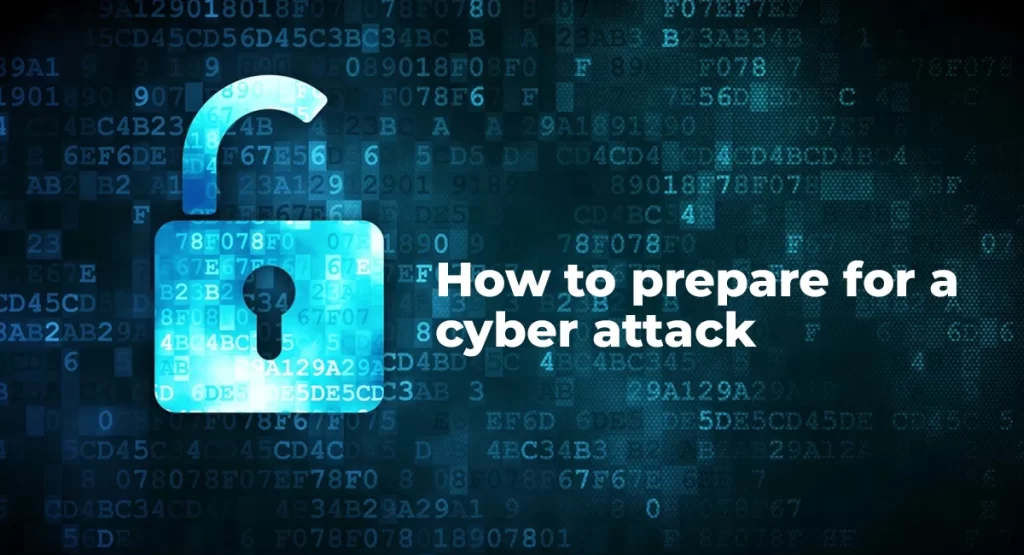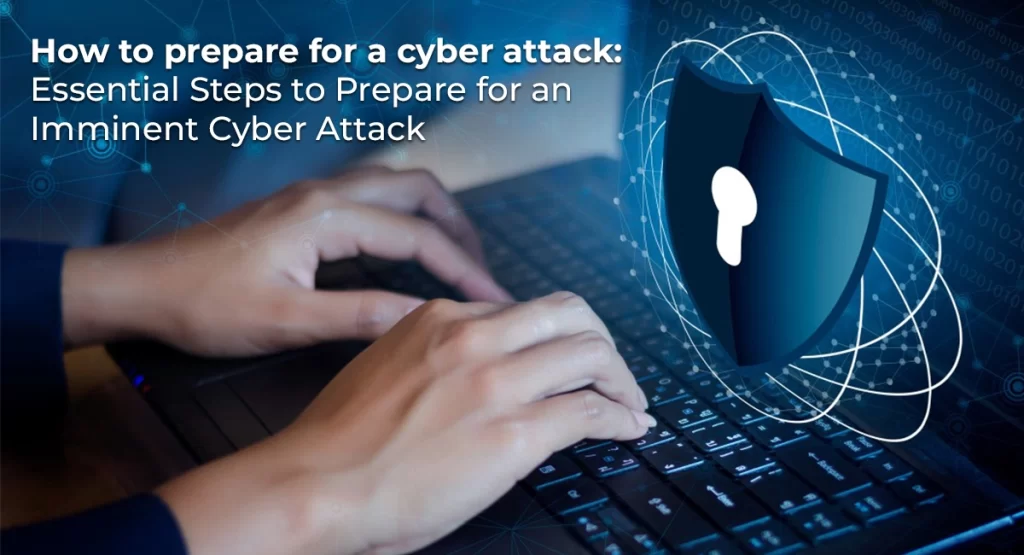In today’s digital world, the threat of cyber attacks are likely to be very common on large individuals and organizations. With cybercriminals becoming increasingly sophisticated, it’s important to be proactive in safeguarding your digital assets.
To stay ahead in this ever-changing landscape, organizations need to be proactive, ready to defend against attacks, and quick to respond if they occur.
What are Cyber attacks?
Cyber attacks can range from phishing scams and malware infections to sophisticated ransomware attacks and data breaches. Regardless of the scale or complexity of the threat, being prepared is the first line of defense.
By implementing robust security measures and establishing effective incident response protocols, you can enhance your resilience against cyber threats.
Common types of cyber attacks include:
1. Phishing: Deceptive emails or messages designed to trick recipients into revealing sensitive information or downloading malware.
2. Malware: Malicious software designed to infiltrate systems, steal data, or disrupt operations.
3. Ransomware: Malware that encrypts files or systems, demanding payment for their release.
4. DDoS Attacks: Distributed Denial of Service attacks that overwhelm systems with traffic, rendering them inaccessible.
5. Insider Threats: Malicious actions or negligence by employees or authorized users that compromise security.
How to prepare for a cyber attack & signs of a Cyber Attack?
In the world of cybersecurity, it’s crucial to stay alert to potential signs of cyber attacks. Identifying unusual activities on your systems and networks can serve as an early warning, enabling you to respond promptly and mitigate any potential harm.
Here are some key indicators of a cyber breach to watch for:
- Significant decrease in network performance: Could be a sign of a DDoS attack aiming to disrupt your network.
- Domain administrator account lockouts: Repeated lockouts might indicate an attempt to breach network security.
- Unusual remote access activity: Multiple logins from distant locations may signal a hacking attempt.
- Suspicious communication: Reports of strange emails, especially phishing attempts, could indicate a breach.
- Strange behavior on devices: Watch for new folders, increased pop-ups, setting changes, or crashes/restarts, which may signify a cyber attack.
Remaining vigilant, having response plans in place, and acting swiftly upon detecting these signs can bolster cybersecurity defenses and minimize potential damage.
Steps to Prepare for a Cyber Attack

1. Educate Yourself
The first step in preparing for a cyber attack is to educate yourself about the different types of threats and how they operate. Stay informed about the latest cybersecurity trends, common attack methods, and warning signs of potential breaches. Knowledge is your best defense against cybercrime.
2. Use Strong Passwords
One of the simplest yet most effective ways to protect yourself online is by using strong, unique passwords for each of your accounts. Avoid using easily guessable passwords like “123456” or “password.” Instead, create complex passwords that include a mix of letters, numbers, and special characters. Consider using a password manager to securely store and manage your passwords.
3. Keep Your Software Updated
Regularly updating your operating system, web browsers, and software applications is crucial for maintaining security. Software updates often include patches for known vulnerabilities that cybercriminals exploit. Set your devices to automatically install updates whenever possible, or manually check for updates regularly.
4. Install Antivirus Software
Antivirus software is a must-have for protecting your devices against malware and other malicious software. Choose a reputable antivirus program and keep it updated with the latest virus definitions. Schedule regular scans of your system to detect and remove any threats lurking in the background.
5. Be Cautious of Suspicious Emails
Phishing scams are a common tactic used by cybercriminals to trick unsuspecting individuals into revealing sensitive information or downloading malware. Be wary of emails from unknown senders, especially if they contain urgent requests or suspicious links. Avoid clicking on links or downloading attachments from unfamiliar sources, and never provide personal or financial information via email.
6. Enable Two-Factor Authentication
Two-factor authentication (2FA) adds an extra layer of security to your online accounts by requiring a second form of verification, such as a code sent to your mobile device, in addition to your password. Enable 2FA whenever possible, particularly for accounts that contain sensitive information or financial data.
7. Backup Your Data Regularly
In the event of a cyber attack, having backups of your important files and data can be a lifesaver. Regularly backup your files to an external hard drive, cloud storage service, or both. Ensure that your backups are encrypted and stored securely to prevent unauthorized access.
8. Secure Your Wi-Fi Network
Your home Wi-Fi network can be a vulnerable entry point for cybercriminals if not properly secured. Change the default password on your router to a strong, unique password, and enable encryption (WPA2 or WPA3) to protect your network from unauthorized access. Disable remote management features and regularly update your router’s firmware.
9. Practice Safe Browsing Habits
Exercise caution when browsing the internet and interacting with websites, particularly those that request sensitive information. Look for HTTPS encryption and a padlock icon in the address bar to ensure that your connection is secure. Avoid clicking on suspicious ads or pop-ups, and only download software from reputable sources.
10. Develop an Incident Response Plan
Despite your best efforts, there’s always a chance that you could fall victim to a cyber attack. Having an incident response plan in place can help you mitigate the damage and recover more quickly. Outline the steps you’ll take in the event of a breach, including who to contact, how to secure your accounts, and how to restore backups.
Necessary actions
- After the cyberattack is over, it’s important not to rush to get everything back online immediately. Instead:
- Test your systems repeatedly to ensure they’re secure.
- Fix any remaining issues and test again.
- Create a ‘go-live checklist’ approved by executives, and cautiously follow it to bring systems back online.
- Consider long-term improvements to your system’s detection, reaction, and recovery processes.
- Keep your customers informed about the situation and any updates.
Disclaimer: The information provided in this blog is for educational purposes only and should not be construed as legal or professional advice. Organizations should consult with cybersecurity experts and legal counsel to develop tailored security strategies based on their specific needs and regulatory requirements.

